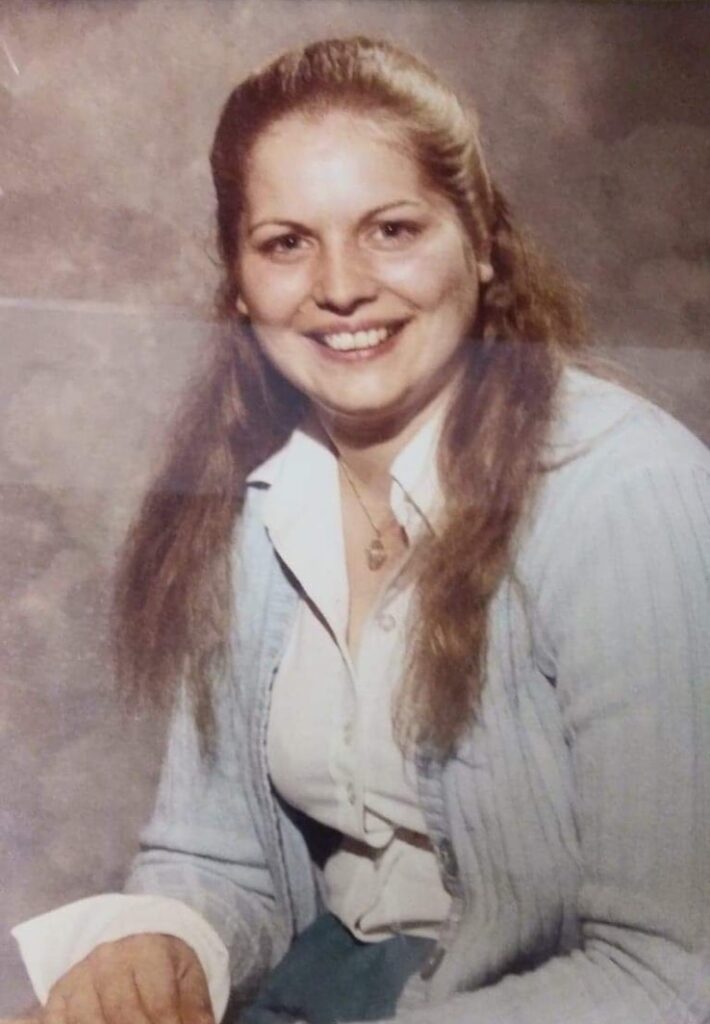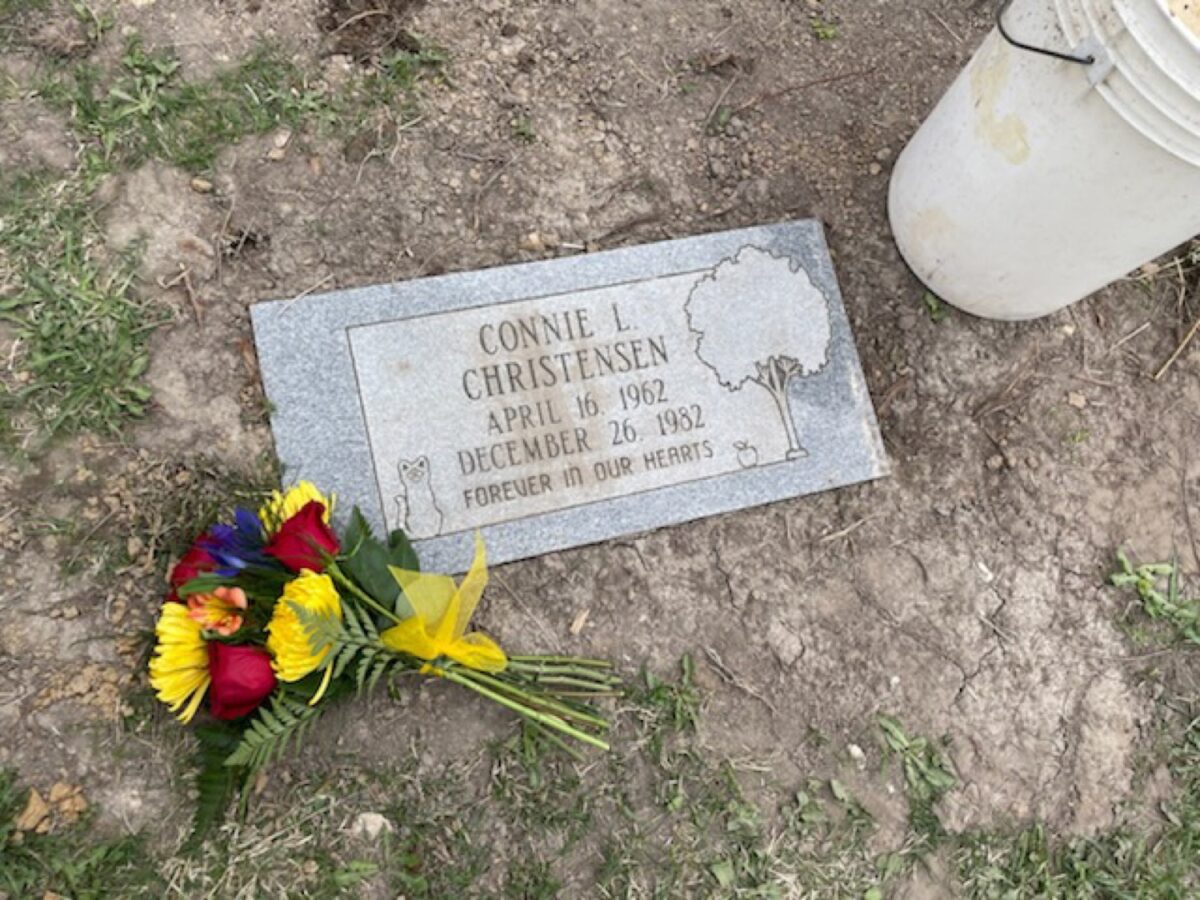For more than 40 years, Misty LaBen didn’t know what happened to her mother, who unexpectedly disappeared just after Misty’s first birthday.
Connie Lorraine Christensen had left Misty in the care of her aunt, but no one expected Connie not to return.
Members of the large, loving family wondered if Connie, described as a transient, free spirited 20-year-old who hadn’t had an easy life and worked at carnivals and other locations to pay her way, might have gotten into some trouble and was reluctant to come home.
Her family had kept the letters she’d mailed home during her travels.
They couldn’t prove Connie hadn’t just decided to try a new path in life, away from her hometown of Oregon, Wisconsin. Connie and Misty’s father had separated.

Connie’s family, which included nine siblings, tried to keep local attention on the unsolved mystery. However, leads dried up there since Connie had been traveling and was last seen in the Nashville, Tennessee, area.
They knew she might have been a victim of foul play, but couldn’t confirm it. Unfortunately, that possibility proved to be true.
Her family now believes she might have been trying to travel home via bus and arrived at the former bus station and diner at Indiana 1 and Interstate 70 in Cambridge City before her life suddenly ended nearby.
Connie’s case could have remained unsolved forever. However, new technologies, dedicated public servants hundreds of miles away and one of her relatives’ interest in genealogy combined to make her identification possible and bring her daughter closure.
Last week, Misty and her family, who live in Michigan, spent time in Wayne County. They visited with local officials who helped make that closure possible and visited the site where her mother’s remains were discovered.
“So many things fell into place for us to figure out what happened,” Misty said.
Misty is saddened that her grandparents died without knowing what happened to Connie, but is glad other family members could join the memorial service and burial.
December 1982 discovery
Misty had no way of knowing that local coroner’s staffers and law enforcement officers had dedicated many hours over the years to identify an unknown female’s remains.
Hunters discovered the skeletal remains in the fork of a tree on the day after Christmas 1982 along Martindale Creek north of Jacksonburg.
Investigators determined the remains had been there, exposed to weather, since late spring of that year. They couldn’t determine a cause of death, but suspected foul play.
It didn’t seem likely that the person had been out for a walk because she was wearing high-heeled wooden soled clogs, along with a buttoned blouse and nylon jacket, maternity pants and undergarments. Despite trying to track the vendor of her gold ring with an opal and two diamonds, no positive identification could be made.
And, no one had reported a young local woman missing, complicating matters in a pre-Internet era without instant worldwide communication.
Years passed. Several transitions occurred in leadership at Wayne County’s coroner’s and sheriff’s offices, pausing local awareness. And, Wisconsin officials hadn’t entered Connie’s information into national missing persons databases when those went online.
The trail began warming about 20 years ago when Indiana State Police received a grant to reopen some cold cases and contacted Wayne County Coroner Kevin Fouche during his second term in office, bringing the Jacksonburg case to his attention.
Fouche dedicated time to finding closure for the woman during his first stint as coroner, without success. The human and clothing remains were reanalyzed, but that era’s technology wasn’t advanced enough to make inroads.
After eight years passed with no action on the case, Fouche was re-elected as coroner and resumed efforts soon after taking office in January 2021. When Chief Deputy Coroner Lauren Ogden joined the coroner’s team later that year, she began overseeing the case and focused on getting a good DNA sample with current technology. The second attempt eventually led to answers.
Unknown to Fouche or Ogden, around that time, one of Misty’s relatives had submitted DNA to learn more about family roots.
Organizations including the DNA Doe Project work with genetic samples submitted through genealogy companies such as 23andMe or Ancestry.com. DNA Doe Project’s expert volunteer investigators have resolved more than 100 cases of unidentified remains through those techniques, according to a news release.
Two relatively close DNA matches submitted to genealogy database GEDmatch led the way to Misty.
Ogden and Fouche are grateful Misty’s family had made their DNA available and sped up the case’s resolution. They wondered if they might eventually determine the woman’s identity after so many years and then have no family to give her back to.
Answers came out of the blue for Misty, who was eating lunch at work when she found Fouche’s message and realized her mother might have been found. She searched online for more details, and then realized it was very probable.
Fouche and Ogden traveled to Michigan to meet Misty and take a swab of her cheek, which led to further confirmation of Connie’s identity.
Misty admits the whole situation was really scary at first for her, but she grew to feel comfortable with Ogden and Fouche.
“It gave me the answers I’ve been looking for for a long time,” Misty said.
The realization that Connie’s disappearance was not by her own choice has given Misty more freedom to ask her family to share more memories of Connie.
After the positive identification and extensive images of the remains that were gathered for future use if needed, Connie could be laid to rest.

Fouche and Ogden again traveled north in April to meet more relatives at Connie’s memorial service and witness her burial in Beetown, Wisc. The burial took place April 15, as close to her April 16, 1962, birthday as possible.
Seeing Connie’s name finally inscribed on a headstone seemed surreal, Ogden says.
Misty now wears her mother’s ring on a chain as well as a keepsake containing some of her ashes, and Ogden is grateful to have had a role in making that possible.
Person of interest identified
Although their No. 1 goal was getting Connie back to her family and providing closure, the Wayne County officials kept quiet about their discovery until now.
Fouche said they didn’t want to jeopardize any possibility of finding the person responsible for Connie’s death if it was possible for the case to be prosecuted.
Before Connie’s burial, a second autopsy was conducted, and a CT scan was made of her remains so a 3D print could be made of every injury if needed for court.
However, the person of interest, who formerly lived in Wisconsin and was an acquaintance of Connie’s family, died shortly after Illinois State Police interviewed him, and nothing could be confirmed at that time.
Connie’s family still had pictures of the two together when she was 16 and he was nearly 30.
He lived to be in his 80s and had a history of violent crime, Fouche said.
The detective told Fouche that hair stood up on the back of his neck as he interviewed the man, and believed the interviewee knew exactly why the detective came to see him.
Although Fouche can’t say the man was guilty, “I feel in my heart he’s responsible,” he said.
Ogden and Fouche plan to remain in contact with Illinois law enforcement and see if the trace evidence they have can align with his possessions and confirm he’s responsible for Connie’s death beyond a reasonable doubt.
A version of this article appeared in the December 6 2023 print edition of the Western Wayne News.

